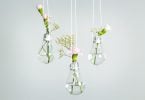Bedroom assembled, check! Kitchen setup, done! New home checklist done. Now for those of you with a green thumb (or aspiring to have one), a home just isn’t a home without a garden. Starting a new vegetable garden from scratch takes some effort, but it offers incredible rewards for your dinner table and your budget. Here are our tips on how to start a new garden at your home.
Finding the right spot
Looking out at your new yard, it may be obvious: is there already a garden bed? If so, take some time to dig around and see if it is in good shape. If it is, and it is in an ideal location with good sun exposure, then you’re already ahead of the game.
If you are truly starting from scratch, determine two things: what will you be planting, and how much sun will your plants need? A vegetable garden needs as much sunlight as possible, so study how the sun travels across your yard to choose the sunniest place. For flower gardens, many species prefer to have slightly more shade. These plots could be placed closer to the house, where they’ll be more protected from long hours of direct sunlight.
How about the size of the plot? Though it may be tempting to go for broke and make your garden huge, you’ll do better with 3-4 foot wide beds. This allows you to concentrate any compost or fertilizer you’re adding and more easily manage weeds and pests.
If there is no suitable growing space…
Consider joining a community garden! Many cities and towns have designated community garden spaces where local residents can rent gardening space. You’ll get to know your community as you tend your gardens, and you’ll also have help nearby if you have questions or need a hand. Make sure you read all of the guidelines about what you can plant, what sort of additives or chemicals are and aren’t allowed and enjoy the community experience!
Or? Consider indoor gardening! Today you can find an abundance of creative approaches to vertical gardening, windowsill planters, and even gardening indoors with the help of grow lights for those darker climates or shady spaces. Vertical gardening can be done indoors or outdoors and can allow apartment dwellers to utilize wall space on the sunny side of the building for growing food, flowers, or succulents in drier climates. Windowsill gardens are more ideal for herbs, salad greens, or other plants that don’t require deep root systems.
Prepare the soil
Most soil can be garden-ready with the addition of some compost and a tiller, but you’ll need to examine your soil and see how much compost it will need. Sandy soil may require you to build raised beds, and rocky soil might require some hard labor to be veggie ready. Your local garden store can probably give you insight into how your area typically fares. Lastly? Be sure you check with the town to see if your soil is in danger of being contaminated in any way. Towns with a history of mining, factories or mills, or railroad settlement sometimes have lead or other contaminants in the soil, which should be noted in official records.
If you don’t want to till up the soil, “lasagna gardening” is also a great no-till, organic option that can help when you have less-than-ideal soil. Find out more in this article for some new house garden ideas.
What to plant…
This depends largely on a few factors: what is the climate like where you live? Lemon trees don’t do well in winter, and many heartier plants don’t do well in extreme heat. Consult your local gardening store or club and get some insight into what grows well in your area!
Second, how much work are you willing to put into your garden? If you don’t want to spend much time on weeding, watering, and so on, you might do better to look into permaculture gardening principles and plant a garden that can somewhat manage itself with minimal input from you. That does mean, however, that you should steer clear of plants that require a lot of attention, and consider installing a drip irrigation system! If you love tending your garden, then have at it – flowers and other more delicate plants like tomatoes will flourish under your watchful eye.
Are you planning on moving garden plants to a new home? Make sure you plan to transport them yourself, as most moving services will not transport live plants in the truck. They will, however, transport all of those gardening tools!








